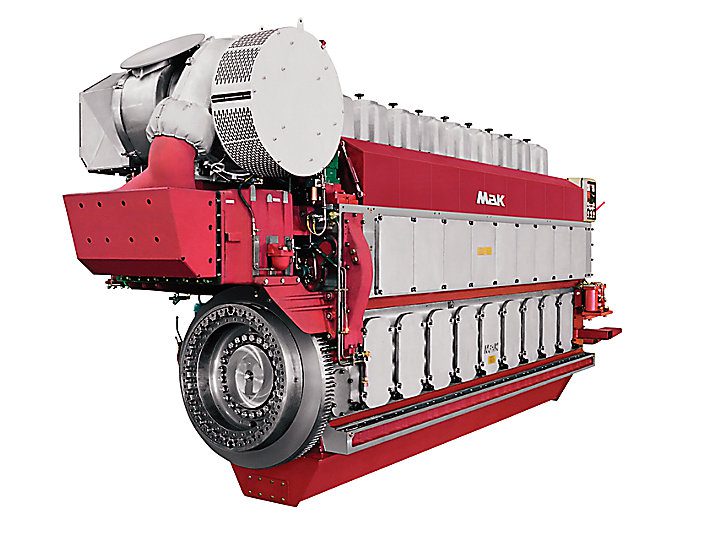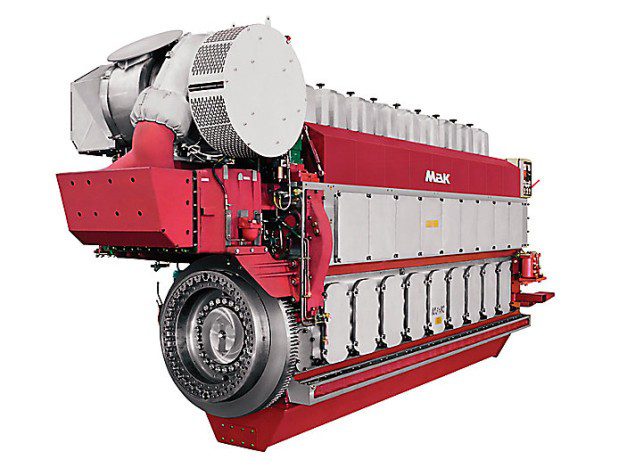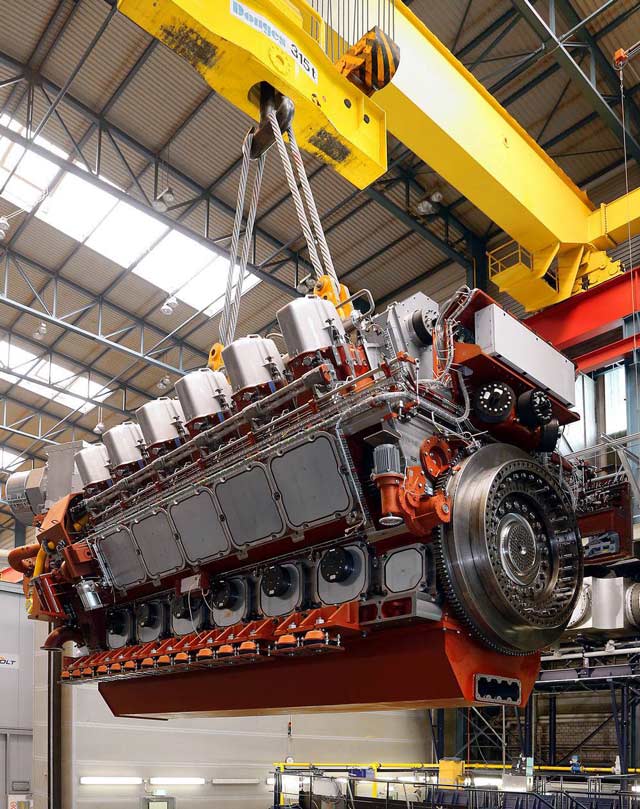South Africa’s Transnet, Union in Talks to Avoid Strike
(Bloomberg) — The biggest labor union at South Africa’s state-owned port and rail company are starting final talks with a third-party arbitrator to resolve a wage dispute and stave off...

The CAT 3512C high speed diesel engine is EPA Marine Tier 3 and IMO II compliant
“The offshore market is still trying to understand which direction it is going in terms of the current state of the oil price and what that means to exploration & production spendings and the associated supporting fleet development,” commented Alex Kohse, Caterpillar’s Global Segment Manager for Offshore and Marine.
Kohse’s office is in Hamburg, Germany, the global center for Caterpillar’s marine business which encompasses medium and high-speed diesel engines as well as the rest of the propulsion train following their recent acquisition of Berg Propulsion.
Caterpillar’s marine business is segmented into several different segments – such as Offshore, Tug and Salvage, Cargo, Pleasure Craft and Governmental. He says their offshore segment is currently amongst the most active and subsequently receives the focus required. Kohse’s job is to focus on developing and executing his company’s strategy for the offshore segment to ensure ongoing success and further profitable growth.
In a constantly evolving and complicated market such as the offshore sector, this is not a simple task and involves quite a bit of research.
Understanding the macro picture of the market is first and foremost, however for Kohse, he takes a three angle approach which takes into consideration the ship owners, shipyards and ship designers.
“None of them are ever in the same location,” he says. “We could be talking with an owner in the Gulf area, a yard in China and a designer in Europe all for the same project.”
Breaking things down even further are the sub-segments within the offshore marine sector such as platform supply vessels, anchor handlers, subsea service (SSV), crew boats and the offshore wind market.
“All have different requirements and their maturity within today’s market are at different stages and different regions globally,” says Kohse, “We’re dealing a lot with the yards, and of course with the ship owners & operators – who all have different needs, and then there’s the naval architects who we want to support finding new ideas, technical solutions and ‘be easy to work with.'”
For PSVs, Kohse notes the market has become quite diverse globally with a shift more towards Asia in recent years for a run-of-the-mill PSV, however for more sophisticated designs, he sees hotspots of expertise remaining within North America and northern Europe, particularly Norway.

A typical power plant for a PSV could include upwards of four predominantly high speed diesels.
Within subsea service vessels, these larger ships have much larger equipment and propulsion packages on board compared to a PSV, and thus have substantially higher power requirements that put them in the medium-speed diesel range.
Geographically, Kohse sees their hotspot for design and construction located in Europe and particularly Norway again and to a lesser extent Singapore and China.
Where a subsea services vessel may have retractable diesel-electric azimuthing thrusters, an AHTS will likely have a conventional shaft propulsion train.
For AHTS’ up to 200 tons of bollard pull, the situation is similar to PSVs as the market has diversified globally with a hotspot in Singapore, but for ships of higher capability on up to 450 tons of bollard pull, Europe is the hotspot for design.

Going forward, Kohse, like everyone else in the industry, is observing the megatrend toward the use of liquefied natural gas as an alternative fuel and his company is investing heavily into that sector.
Additionally, Caterpillar is combining new technologies to handle assets more intelligently by including remote monitoring and condition based maintenance.
“We see this as the next evolution step within the area of intelligent fleet management and maintenance solutions with great potential for increasing technical availability of the vessel asset and potential operating cost reductions,” says Kohse.

Sign up for gCaptain’s newsletter and never miss an update

Subscribe to gCaptain Daily and stay informed with the latest global maritime and offshore news


Stay informed with the latest maritime and offshore news, delivered daily straight to your inbox
Essential news coupled with the finest maritime content sourced from across the globe.
Sign Up